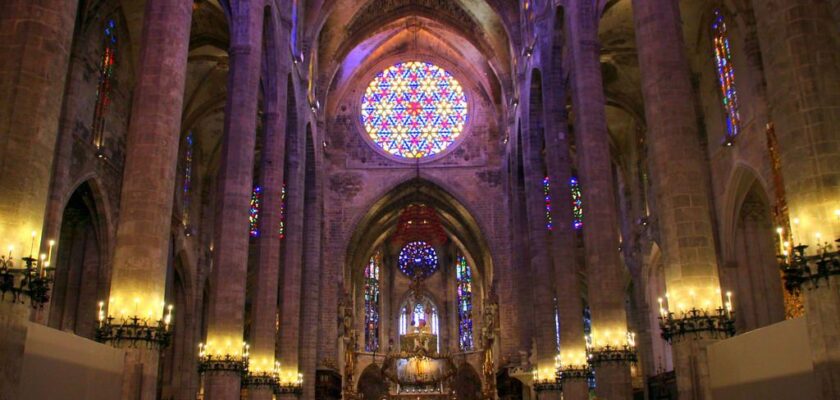Palma de Mallorca Cathedral
Palma Cathedral is one of the main attractions of the Balearic Islands belonging to Spain. At the same time it is the main religious building of the island region, which the locals call simply and succinctly: La Seu. This name was established in the times of the Kingdom of Aragon, an ancient state that existed in the Pyrenees. The exterior appearance of the Cathedral of Palma de Mallorca, its architecture and interior decoration deeply absorbed the features of that distant era – the Middle Ages, bringing to us its cultural and historical heritage. It is not for nothing that this iconic structure is called a true treasure of the Mediterranean.
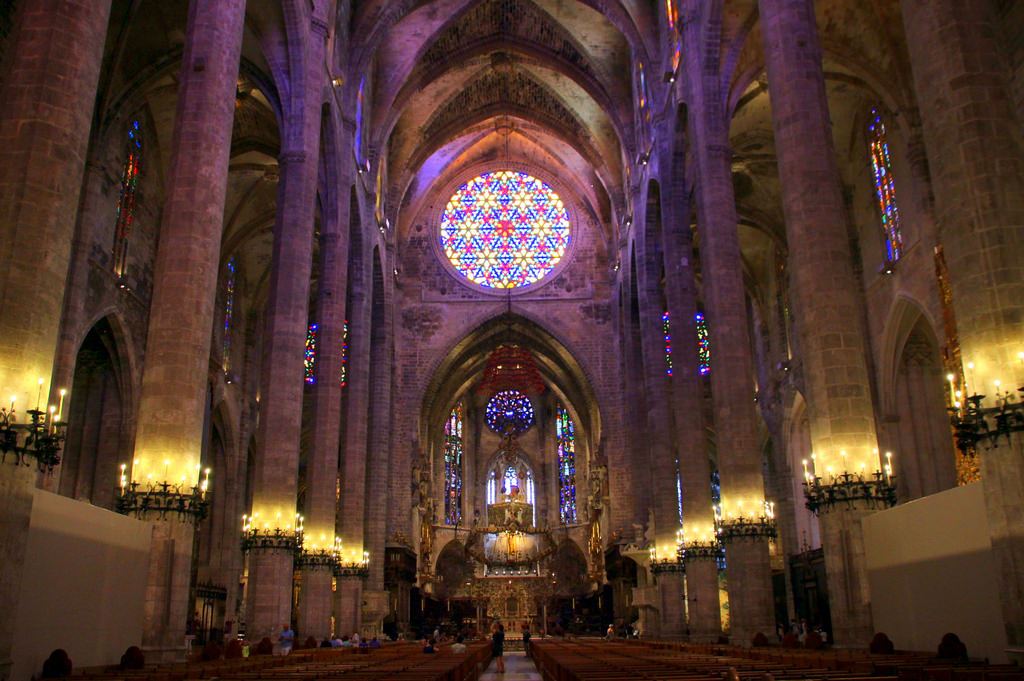
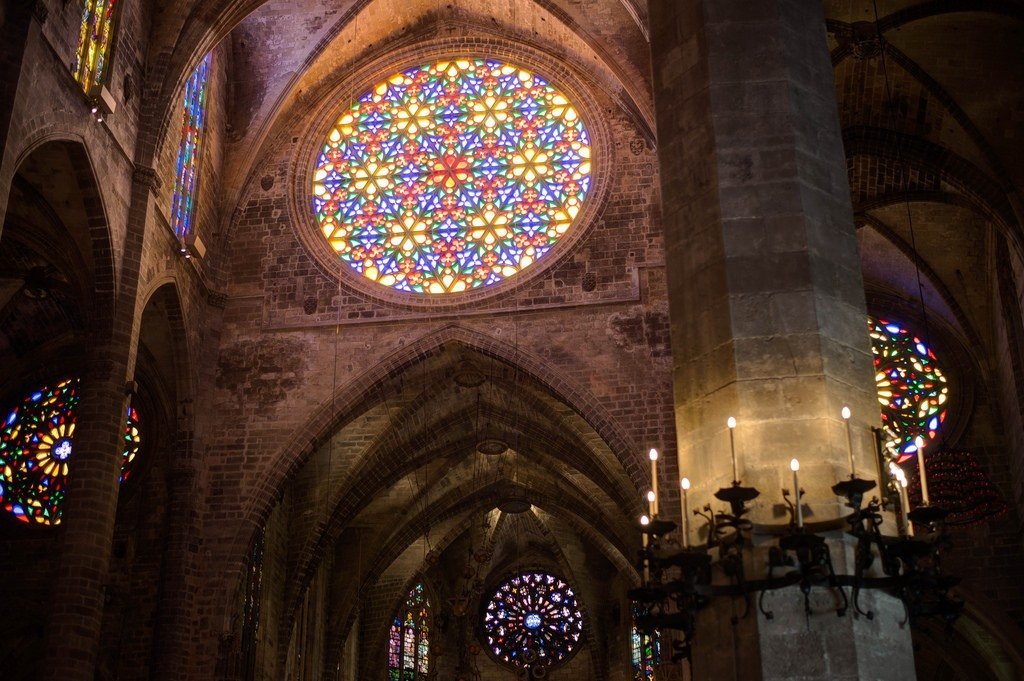
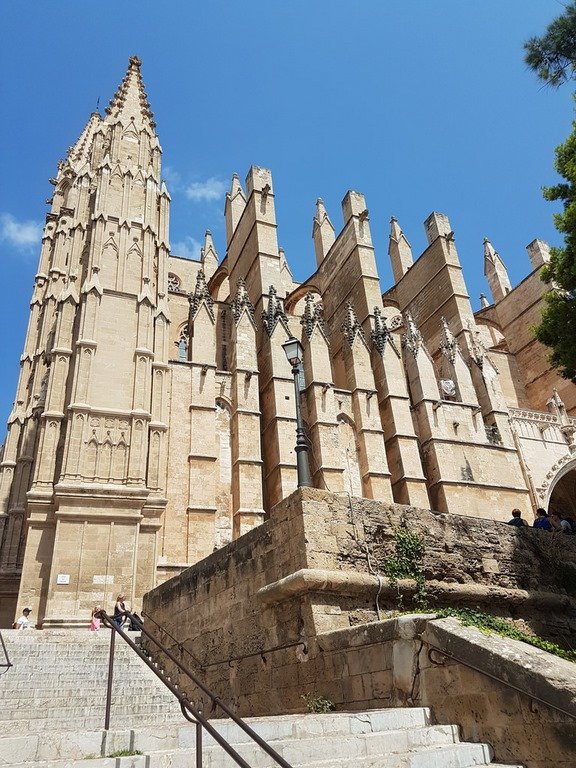
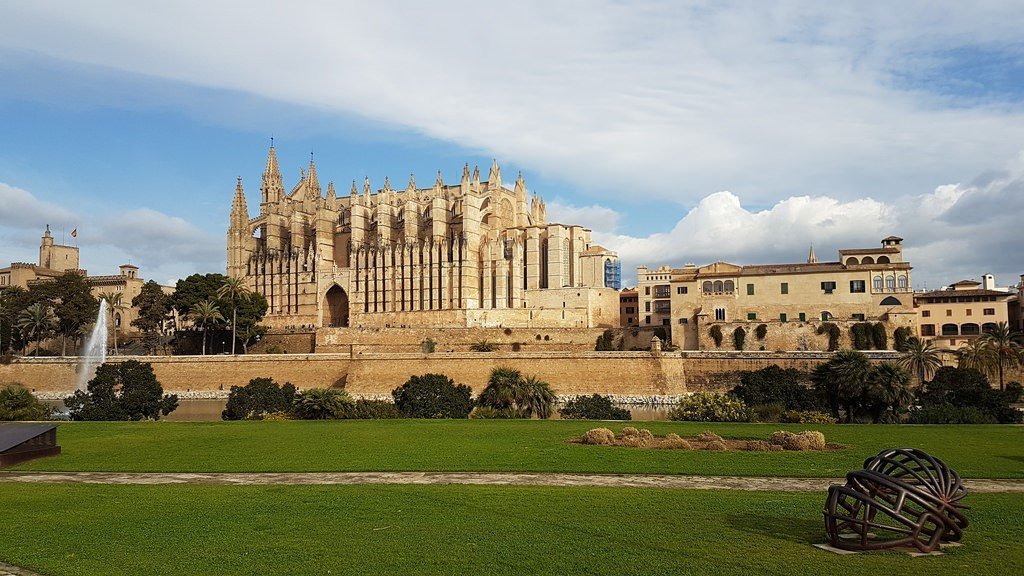
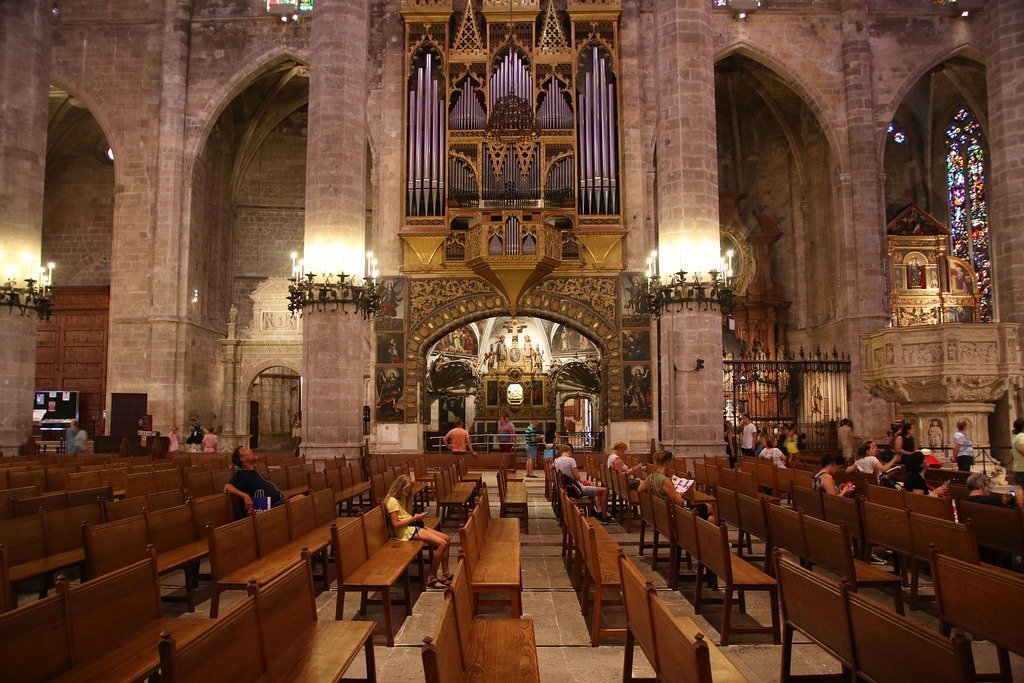
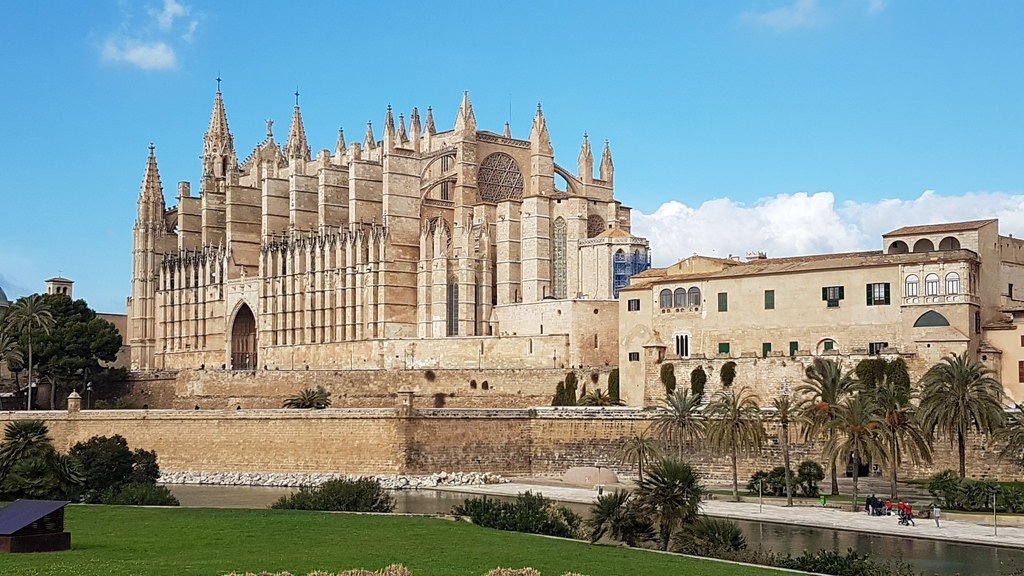
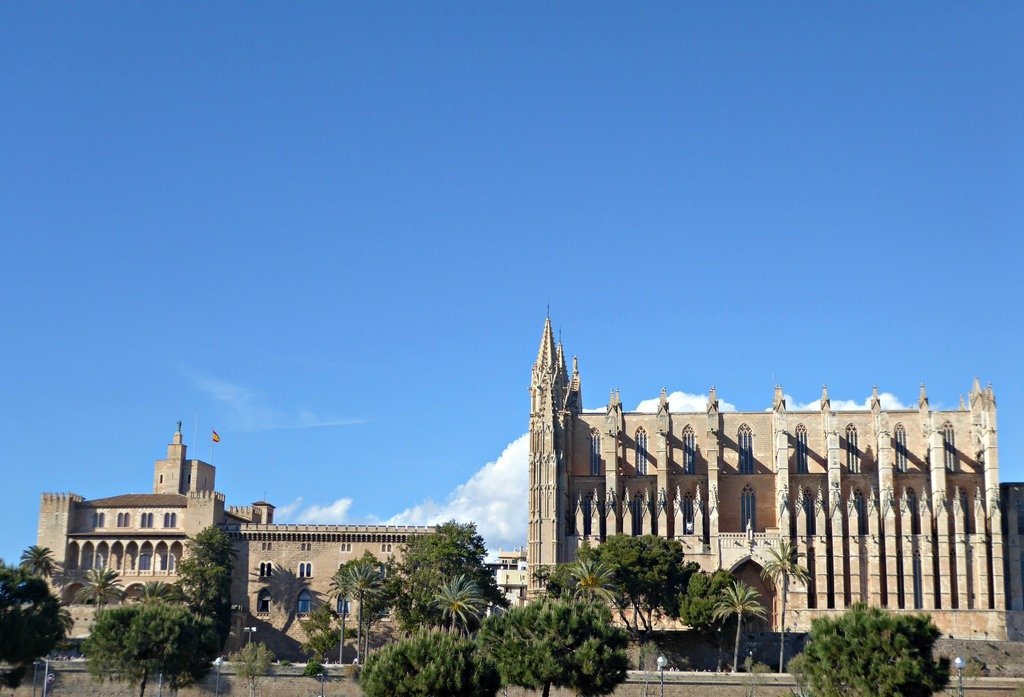
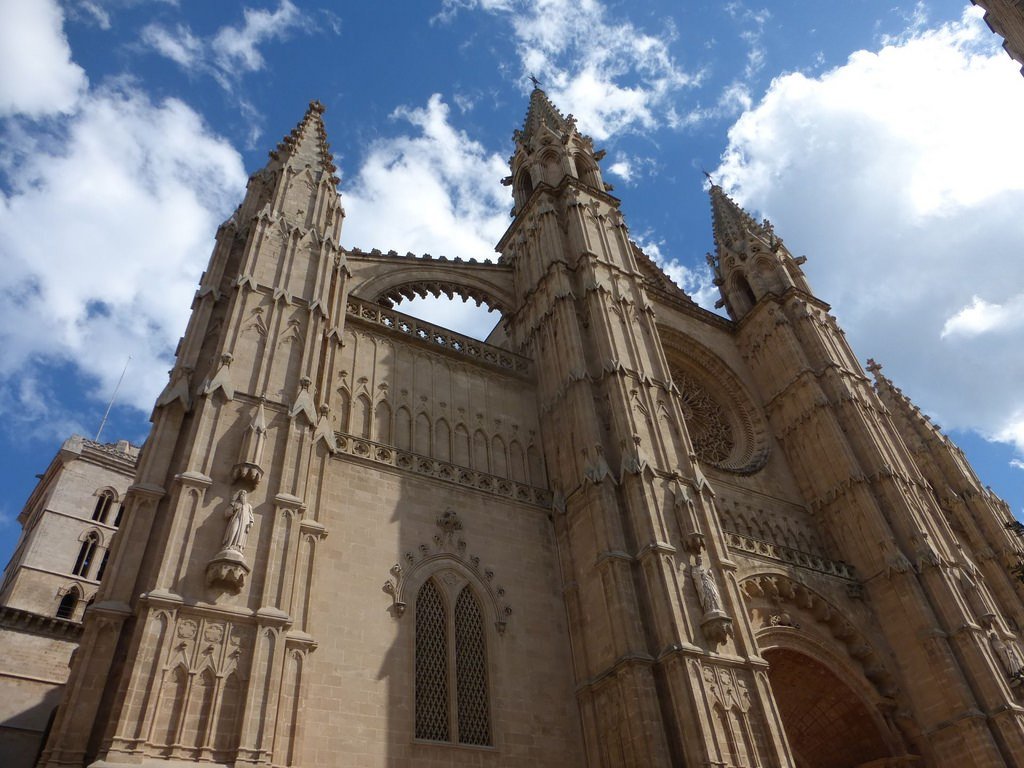
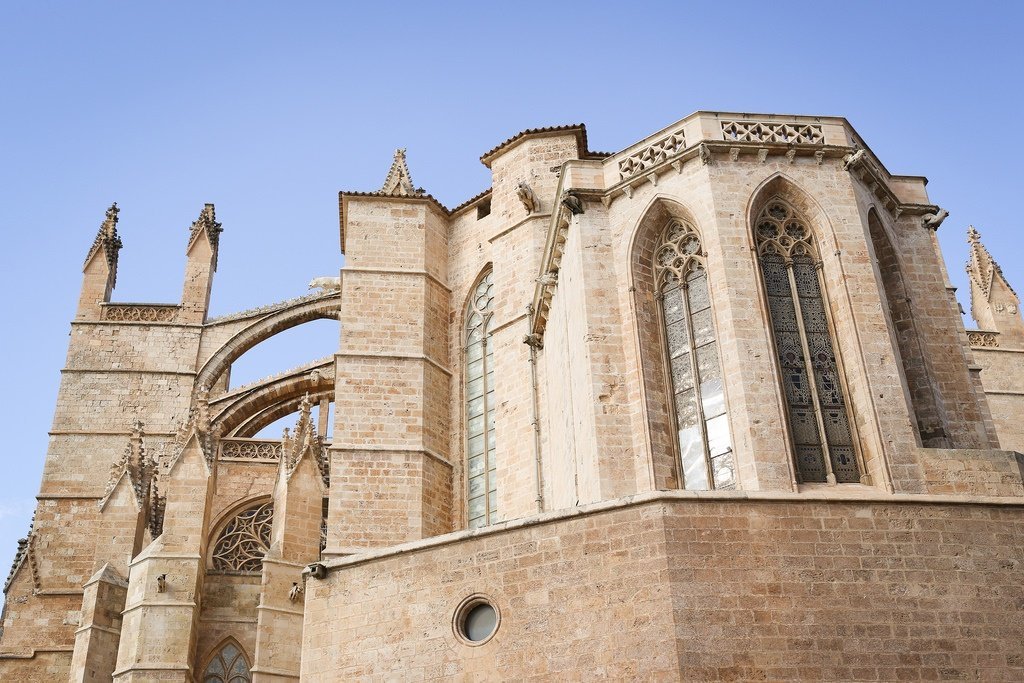
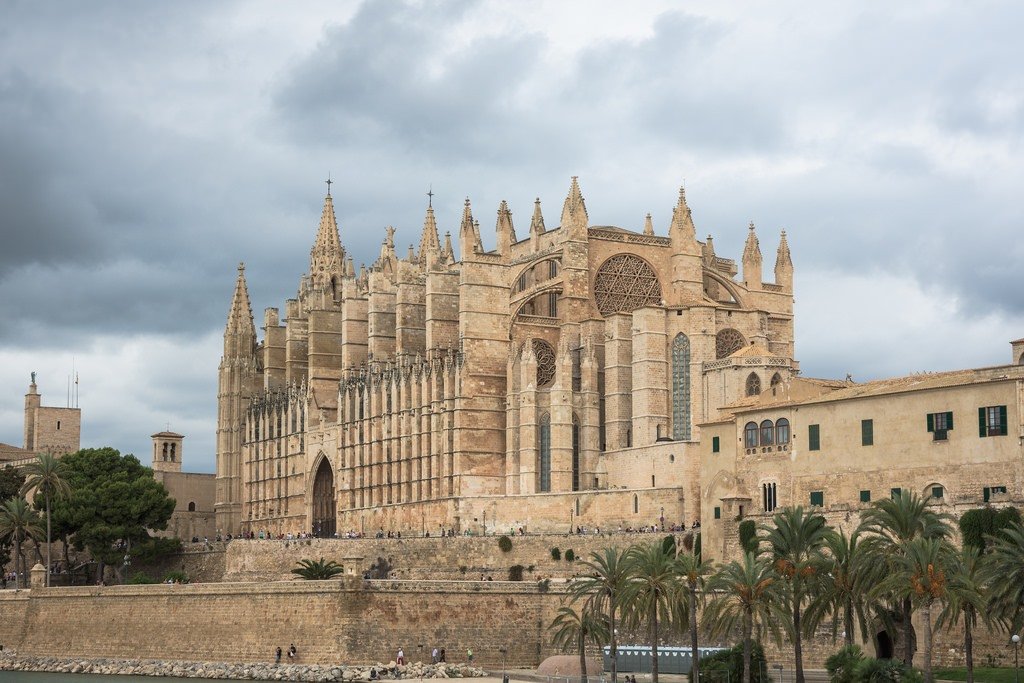
Video: Palma Cathedral
Highlights
The Palma Cathedral rises prominently, and this good location allows you to see it even from afar. The first impression is that it is huge! And it really is: in height the temple reaches 44 meters, in width – 58 m, and its length – 120 meters. Being one of the most important not only in Spain, but also in the whole of Southern Europe, the cathedral is widely known by several other names. However, it has only one official name – the Cathedral of the Blessed Virgin Mary. In addition to the already mentioned La Seu, the attraction is also commonly referred to as the Cathedral of Palma. The fullest name is: Cathedral of the Holy Communion, Sea, Light and Space.
.
The last name is long, it may even seem overly pathos, but everyone who at least once sees this cathedral with his own eyes, will willy-nilly agree with the amazing accuracy of such epithets. The temple rises practically on the seashore and is visually perceived as if it reigns in space. It is really filled with light, and not only because the sun in this region is traditionally a lot. Inside the temple is also very bright, and all thanks to the numerous stained glass windows, not to mention the magnificent Gothic-style rose window – the largest in the world.
.The main shrine of the cathedral in Palma de Mallorca, which is especially important and symbolic for the faithful, is the Ark of the Life-Giving Cross. This “landmark within a landmark” has survived from the 15th century. It is inlaid with precious metals and stones. And those tourists who revere art in all its manifestations, are pleased to consider priceless paintings, a collection of jewelry, various religious utensils.
.
Within the walls of the temple regularly held and organ concerts, gathering a large number of spectators. One of the tourists, who has been here more than once, wrote in his blog: “After visiting this cathedral, it’s as if I am born again!” It is very strong. And, I think, there is no exaggeration in these words.
.History of Palma Cathedral
King Jaime I the Conqueror of Aragon, who in 1229 launched a crusade against the Arabs who owned the Balearic Islands and successfully completed it, rightly decided that the religious legacy of the former masters of the archipelago should be quickly done away with. Already in 1230 he ordered to build a Christian cathedral in Mallorca. According to the monarch’s plan, it was also to be the final resting place of the rulers of the country.
.There is also a legend in which the prehistory of the Palma Cathedral is presented in a slightly different light. According to the legend, the royal fleet got near Mallorca in a fierce storm. The chances of survival in it were minimal, and the king turned with a prayer to the Virgin Mary, asking her to save his ships and crew, promising in return that he would certainly build a temple of her name. Apparently, the Virgin Mary heard King Jaime: the fleet under his command safely reached the shores of the island of Majorca, and the valiant warriors drove away the Moors. His Majesty did not forget about his promise and erected a magnificent temple right on the site of the Muslim mosque, which his people were razed to the ground.
.
Now let us turn again to the true historical facts. Under Jaime I, strictly speaking, the cathedral was not built – in his time, the construction of the temple only began. Continued all the construction and finishing work for a total of more than three hundred years. Of course, the king himself never saw his brainchild. However, this architectural masterpiece, striking in its size and allowing to accommodate 18 thousand people at the same time, was admired and admired by subsequent generations. We, living in the XXI century, admire it too.Since the temple was built for so long, it is impossible to attribute its style to any one particular style. Many researchers tend to consider it an example of Levantine Gothic. But others, the majority of them, attribute it to this style very conditionally. They argue their position by the fact that the architecture of Palma Cathedral combines elements of different styles that appeared much later. However, the basis, of course, is the Levantine, or, as it is also called, Spanish Gothic style.
.The cathedral in Palma de Mallorca is one of the brightest cathedrals in the entire Mediterranean. And all thanks to the large number of windows, the beauty and uniqueness of which are given by the original stained glass windows of the XIV-XV centuries. Despite the fact that in recent history the religious building has been rebuilt many times, its main elements, including the windows, have survived in pristine condition.
.
The modernization of Palma Cathedral was carried out by the famous architect Jaime Fabre, who worked on the creation of the cathedral and in the capital of Catalonia, Barcelona. The interior of the cathedral was designed by Antonio Gaudi, who gained fame among his contemporaries as a brilliant architect. There is no need to doubt in such a loud epithet: it is enough to go inside the temple to make sure – such beauty and splendor could only bring only a genius Master.
.
Gaudi was engaged in restoration work in the temple from 1904 to 1914. Signor Antonio was an architect of modernist views, which did not please the authorities. Contemporaries even said that in his plans he was ready to go very far – up to the destruction of the cathedral and building in its place a new one, that is, from scratch. The authorities, of course, in every possible way limited too “progressive” architect. However, Gaudi still left his mark on the appearance of the Palma Cathedral. According to his sketches were made new stained-glass windows. The massive nave with socket windows is also his design, not to mention the metal canopy for the cleros of the royal chapel and the division of the choirs.
.Current state of the cathedral
Experienced tourists advise newcomers: to get acquainted with the cathedral in Palma de Mallorca should take a whole day. Otherwise, to penetrate its splendor and the amazing atmosphere of peace and tranquility reigning here in full measure simply will not work.
.
The basis of the supporting structure of the temple are fourteen columns, each 30 meters long. Involuntarily draws attention to the so-called “Gothic eye”, which is one of the most recognizable elements of the cathedral – it is its window-rose in the form of a six-pointed star, which is one of the largest among other similar windows in the world (total area of 97.5 square meters). The architectural ensemble of the temple also includes the tiny chapel of the Holy Trinity, where the remains of many Aragonese and Catalan kings found their final rest.
.
Gaudi’s wrought iron altar canopy, impressive in its gigantic size, was once put away in storage, and today’s visitors to the cathedral might never see it at all. The structure was later restored, and it was put back in place. However, it took three attempts to convince the conservative churchmen to agree to this. They did not realize that the modernist ideas of the famous master would not spoil the strict Gothic cathedral – rather, on the contrary! And so the strict Catholic dignitaries, in the end, “surrendered”. By the way, the building of Palma Cathedral at that time was still electrified – and also on the initiative of Antoni Gaudi.
.On the side of the northern facade is the entrance to the Episcopal Church. Its holy of holies, the altar, is surrounded by four massive columns. They, decorated with figures of angels holding musical instruments, are themselves true works of art. Tickets are sold (cost 6 euros, children go free) in the very first hall, from where you can access the Cathedral Museum.
.
The attention of visitors is drawn to the magnificent gold-decorated altar, which stands in the very center of the hall. Another interesting exhibit – a field altar with the relics of the saints – invariably attracts all lovers of history. There is evidence that it belonged to King Jaime I the Conqueror himself. The faithful invariably head for the three thorns, a relic supposedly taken from the crown of thorns of Jesus Christ. It’s also interesting to visit the two assembly halls just outside the museum space. The first is decorated in the Baroque style and the second in the Gothic style.
>When you pass through one of the side chapels of Palma Cathedral, be sure to look up: before your eyes will be a magnificent cross vault, supported by elegant columns of octagonal shape. If you are lucky enough to visit the cathedral in the morning, you can witness the fantastic play of light and shadows on the western facade. The month also influences how impressive the marvelous “spectacle” will be: in February and November it looks especially mesmerizing and beautiful!
.Among other notable elements of the interior decoration of the main cathedral of Palma de Mallorca, we would like to single out two pulpits, the smaller of which was partially remodeled by Antoni Gaudi, and a giant organ. The latter appeared here in 1798 and still pleases listeners with its unparalleled sound. Concerts are held on the first Tuesday of every month in the afternoon. As for the influx of tourists, the temple can be crowded at any time of the day. Observations show that people start gathering en masse as early as 9 a.m.
.Opening hours
From April 1 to May 31 and from October 1 to October 31, the temple opens at 10:00 a.m. on weekdays and is open until 5:15 p.m.; on Saturdays it is open from 10:00 a.m. to 2:15 p.m.
.
From June 1 to September 30, on weekdays, Palma Cathedral is also open from 10:00 a.m. but closes an hour later, at 6:15 p.m., and on Saturdays, the same weekend schedule as in April-May and October.
.Between November 2 and March 31 on weekdays, the temple opens, again, at 10:00 am and is open only until 3:15 pm. The Saturday schedule remains the same. On Sundays, the cathedral is closed regardless of the time or month of the year.
.How to get there
The Cathedral in Palma de Mallorca is located at Plaza Almoina, s/n, 07001 Palma de Mallorca, Islas Baleares, España.
.To get to Palma Cathedral, you can take bus numbers 102, 104, 106, 107 and 111, stop at Catedral.
.